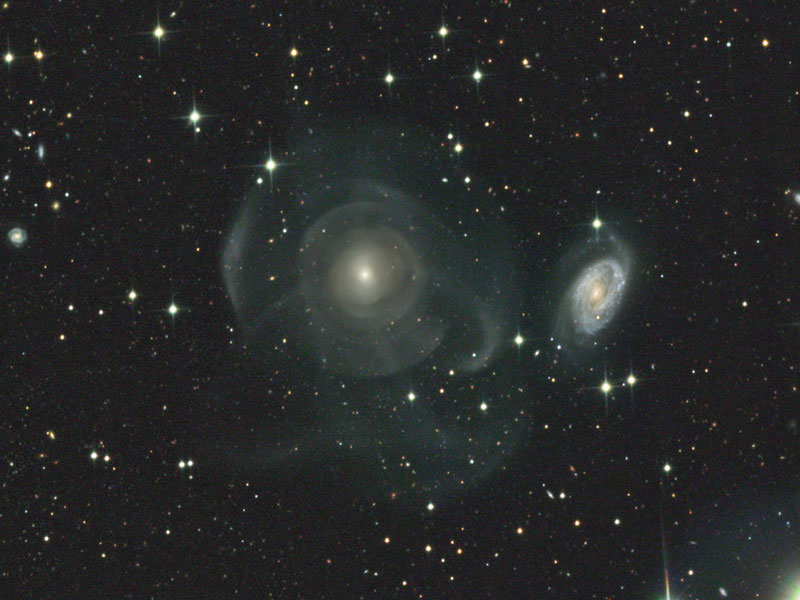
|
Credit & Copyright: Mischa Schirmer
Explanation:
What's happening to galaxy NGC 474?
The multiple layers of emission appear strangely complex and unexpected given the
relatively featureless appearance of the elliptical galaxy in less deep images.
The cause of the shells is currently unknown, but possibly
tidal tails related to debris left over from absorbing
numerous small galaxies in the past billion years.
Alternatively the shells may be like ripples in a pond,
where the ongoing collision with the spiral galaxy to the right of
NGC 474
is causing density
waves to
ripple though the galactic giant.
Regardless of the actual cause, the
above image dramatically highlights the increasing consensus that the
outer halos of most
large galaxies are not really smooth
but have complexities induced by frequent interactions with -- and accretions of
--
smaller nearby galaxies.
The halo of our own
Milky Way Galaxy
is one example of such
unexpected complexity.
NGC 474 spans about 250,000
light years
and lies about 100 million light years distant toward the constellation of the Fish
Pisces.
|
January February March April May June July August September October November December |
| ||||||||||||||||||||||||||||||||||||||||||||||||
NASA Web Site Statements, Warnings, and Disclaimers
NASA Official: Jay Norris. Specific rights apply.
A service of: LHEA at NASA / GSFC
& Michigan Tech. U.
Based on Astronomy Picture
Of the Day
Publications with keywords: galaxies - interacting galaxies
Publications with words: galaxies - interacting galaxies
See also:
- Galaxies in the River
- APOD: 2025 August 28 Á Galaxies, Stars, and Dust
- APOD: 2025 August 19 Á Giant Galaxies in Pavo
- APOD: 2025 June 1 Á UGC 1810: Wildly Interacting Galaxy from Hubble
- APOD: 2025 March 12 Á NGC 772: The Fiddlehead Galaxy
- APOD: 2025 March 2 Á The Hubble Ultra Deep Field in Light and Sound
- Peculiar Galaxies of Arp 273
